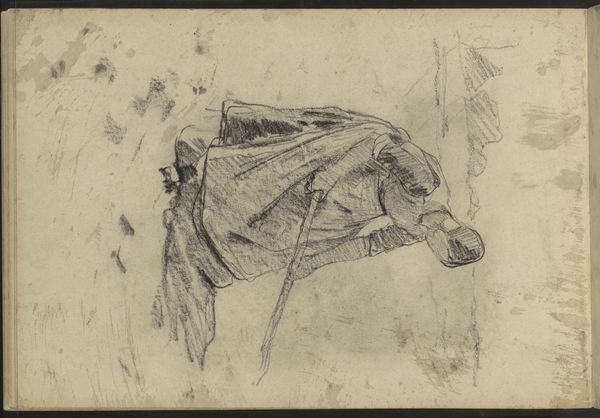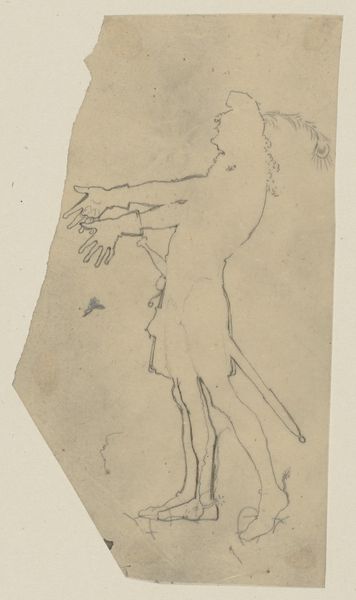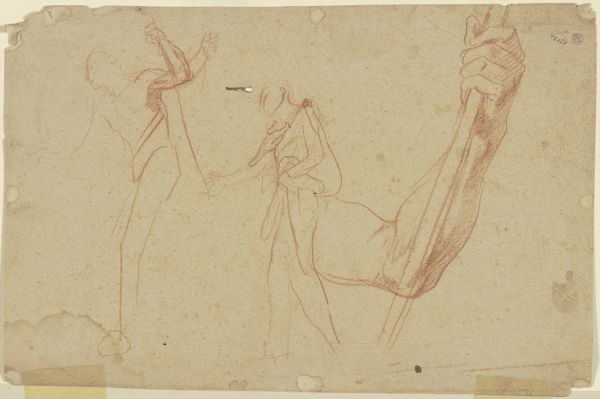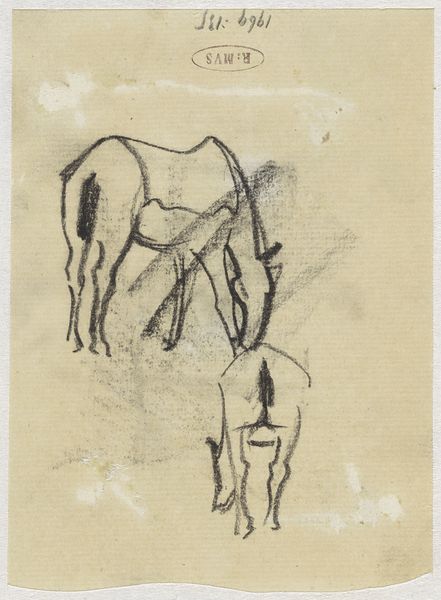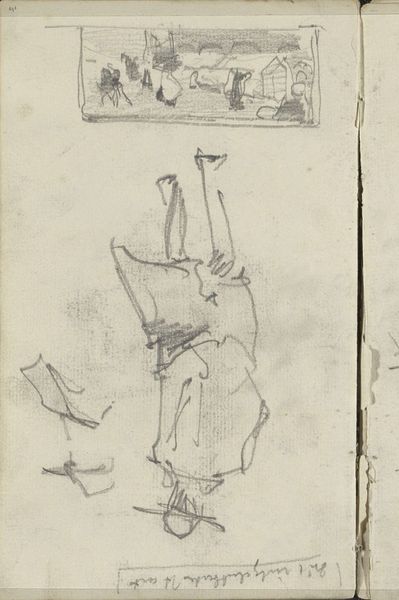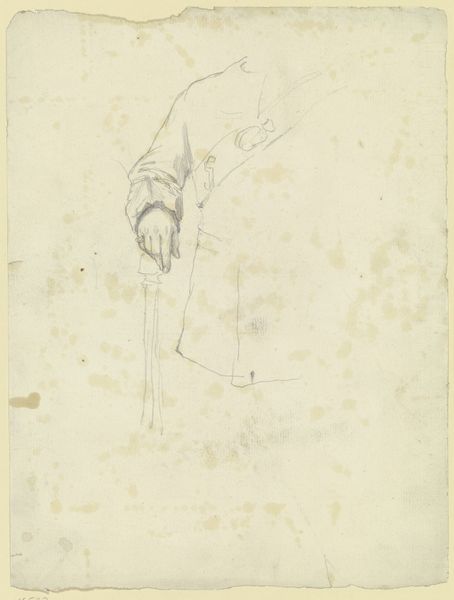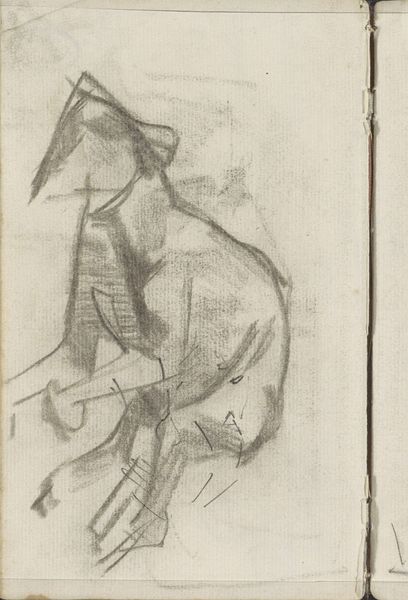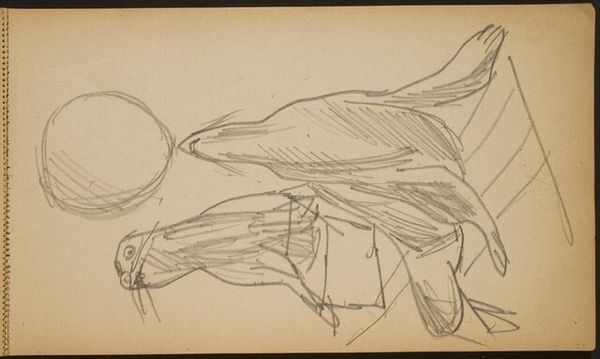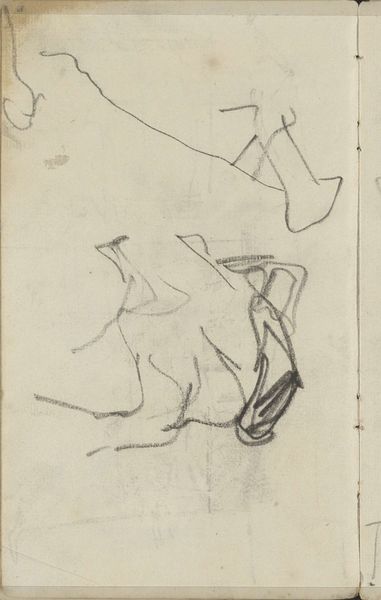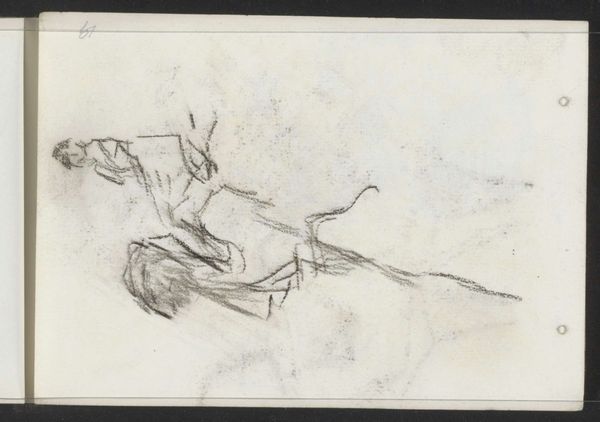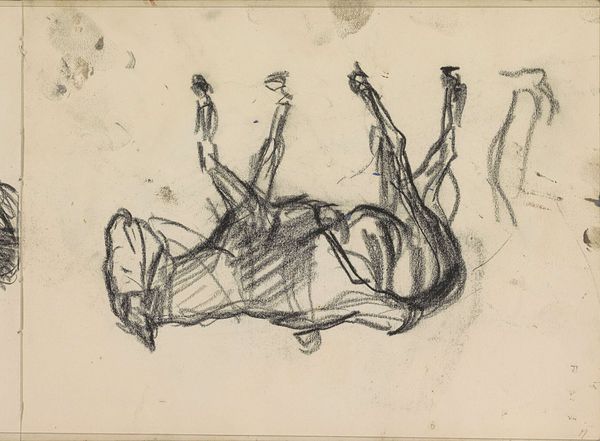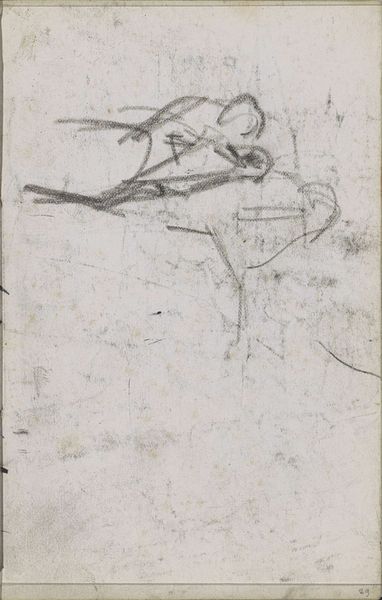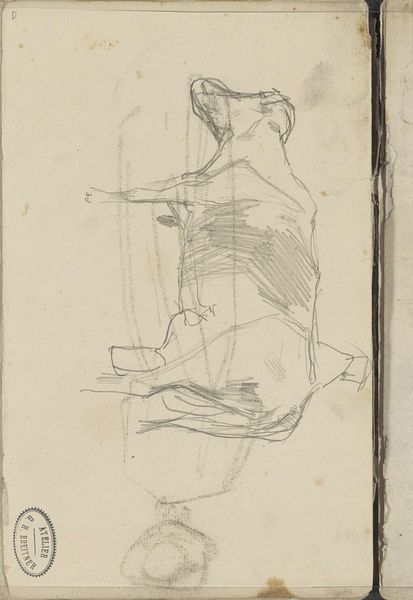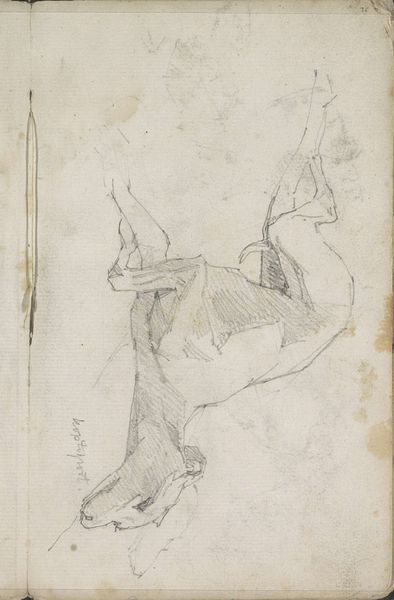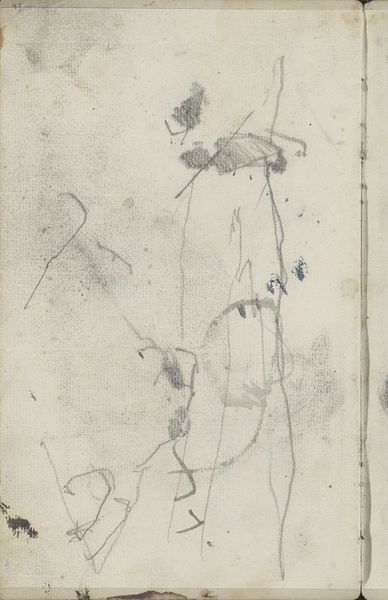
Two Anatomical Studies of the Hind Quarters of a Horse; verso: Tracing of the Profile View from the Recto c. 19th century
0:00
0:00
Dimensions: actual: 26.8 x 18.5 cm (10 9/16 x 7 5/16 in.)
Copyright: CC0 1.0
Curator: This is Eugène Delacroix's "Two Anatomical Studies of the Hind Quarters of a Horse," currently held at the Harvard Art Museums. Editor: Wow, it’s all angles and sinew! Feels like a raw, almost vulnerable look at power. Curator: Absolutely. Delacroix, active in the 19th century, engaged with Romanticism's fascination with nature, here dissecting the horse—a symbol of both freedom and subjugation. The detailed anatomical study invites us to consider the animal's physical reality, beyond its romanticized image. Editor: It makes me think about control, and how we exert it. The precision of the lines, the almost clinical quality... it's beautiful, but unsettling. Like a beautiful cage. Curator: Precisely. The study, in its dedication to scientific accuracy, also mirrors the era's colonial gaze—reducing living beings to objects of study and control. It speaks to broader themes of power dynamics and objectification. Editor: I see it now! It's a drawing of a horse's muscles, but it’s really about the muscles of empire. Curator: Indeed. Delacroix provides a visual language for understanding that relationship. Editor: Well, I will never look at a horse the same way. Curator: Nor I. This piece reveals layers of meaning that resonate even today.
Comments
No comments
Be the first to comment and join the conversation on the ultimate creative platform.
